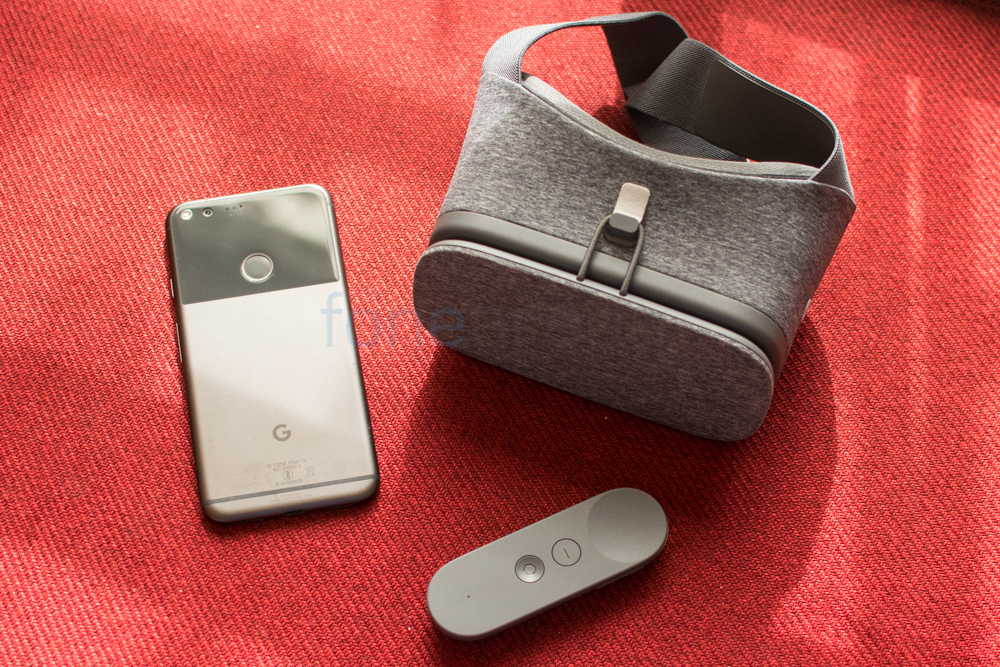 VR done right has the potential to fool your brain into feeling emotions and sensations that can’t be replicated in a 2 dimensional medium. As technology moves ahead in its quest for achieving photorealistic virtual reality, we’re observing two distinct campaigns. Where the HTC Vive, Oculus Rift and Playstation VR focus on a top-notch experience that requires expensive headsets and equally powerful computing power, Google alongside Samsung and others have been focussing on bringing the VR experience to the most ubiquitous computing platform i.e. the smartphone. Between Samsung’s Gear VR that worked only with their handsets to the Cardboard which offers an introduction to VR but little more, Google’s work has been cut out for them. Called Daydream, the name itself evokes a sense of imagination and all the possibilities that come with it. Google’s all new VR headset was introduced a while back and finally made its way to India. Here’s our review of the Google Daydream View.
VR done right has the potential to fool your brain into feeling emotions and sensations that can’t be replicated in a 2 dimensional medium. As technology moves ahead in its quest for achieving photorealistic virtual reality, we’re observing two distinct campaigns. Where the HTC Vive, Oculus Rift and Playstation VR focus on a top-notch experience that requires expensive headsets and equally powerful computing power, Google alongside Samsung and others have been focussing on bringing the VR experience to the most ubiquitous computing platform i.e. the smartphone. Between Samsung’s Gear VR that worked only with their handsets to the Cardboard which offers an introduction to VR but little more, Google’s work has been cut out for them. Called Daydream, the name itself evokes a sense of imagination and all the possibilities that come with it. Google’s all new VR headset was introduced a while back and finally made its way to India. Here’s our review of the Google Daydream View.
Compared to the Google Cardboard, the difference in construction is night and day. While the former was well, quite literally built out of cardboard and cheap lenses, Daydream is a much more premium product. Covering the interior construction, the entire headset is wrapped in fabric.
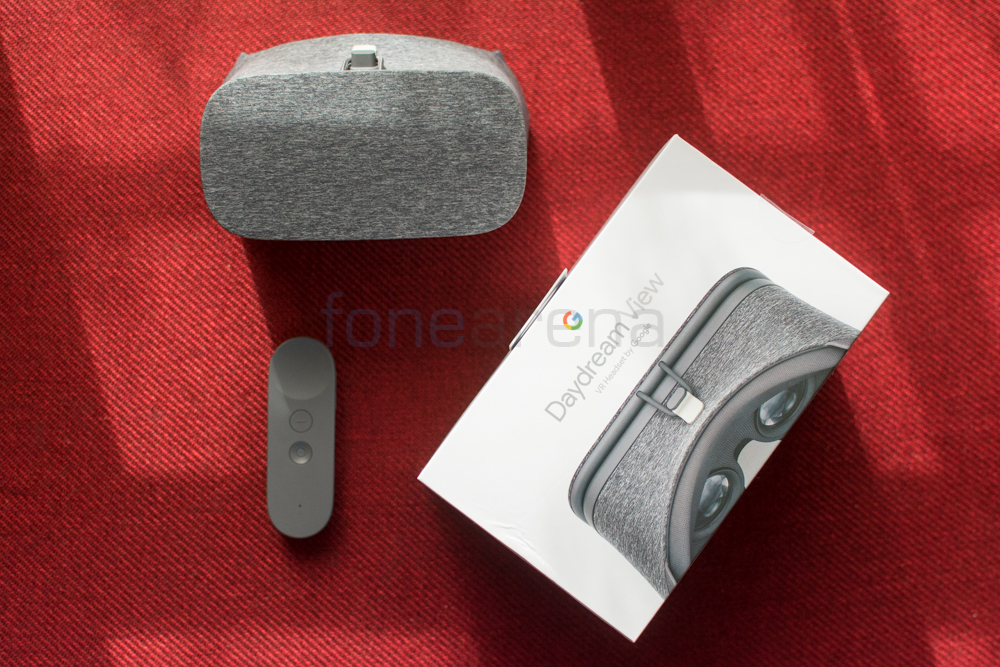
Over at the back, the part which comes in direct contact with your face has a thick foam padding that makes it very comfortable to wear. Unlike some of the other mobile centric VR headsets which have a plastic construction, we vastly prefer the feel of the fabric and it was very easy on the face even after hours of use. A downside of this however is that prolonged use can often cause you to sweat from your brows and the fabric tends to absorb this.
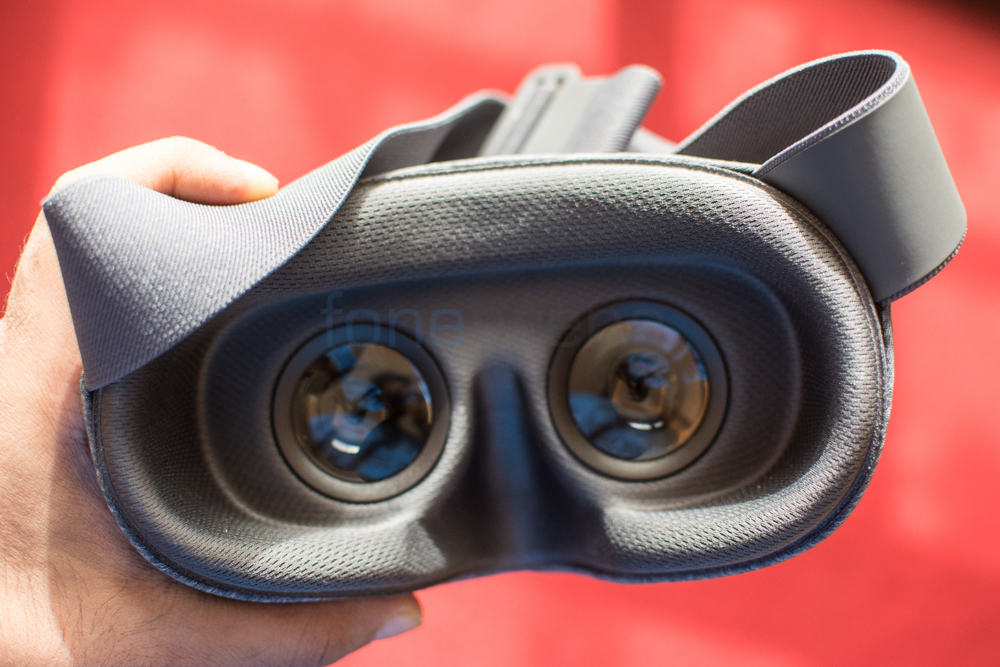
To that effect, the fabric around the eyepiece can be easily removed and washed. the built-in lenses however tend to attract a lot of dust which can be very hard to remove. The head strap on the other hand is comfortable enough. We’ve used the headset for hours on end and comfort is one area where the Daydream View definitely wins. Between the soft fabric and thick foam padding, there’s little to fault the Daydream View. The headstrap doesn’t go over the head which is something that we personally prefer since it doesn’t mess with hair but it does put a bit more pressure on the rear straps. Owing to the construction style, the headset puts pressure on the forehead. Overall though, we found the Daydream View to be one of the most comfortable ways to get into VR.
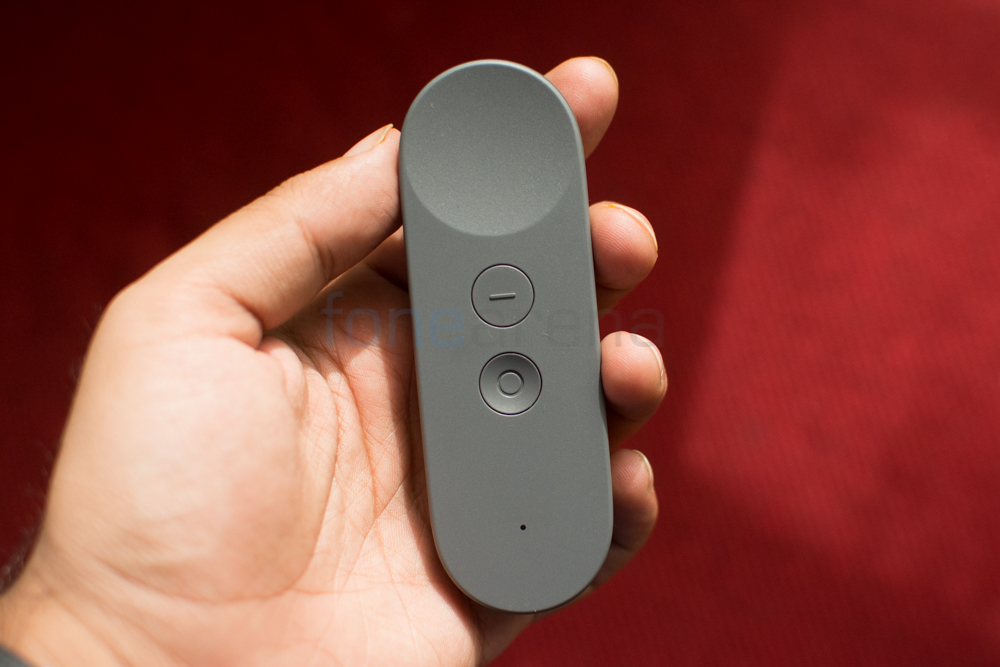
Daydream View however is not just the headset. The entire package that comes together to make it work is intrinsic to the VR experience. Case in point is the bluetooth remote that comes bundled in. The remote has a clickable trackpad on top alongside two buttons that either take you to the home screen or can be used within app menus. Comprising of some basic gyroscopic sensors, the remote does an admirable job of working as a VR pointer of sorts.
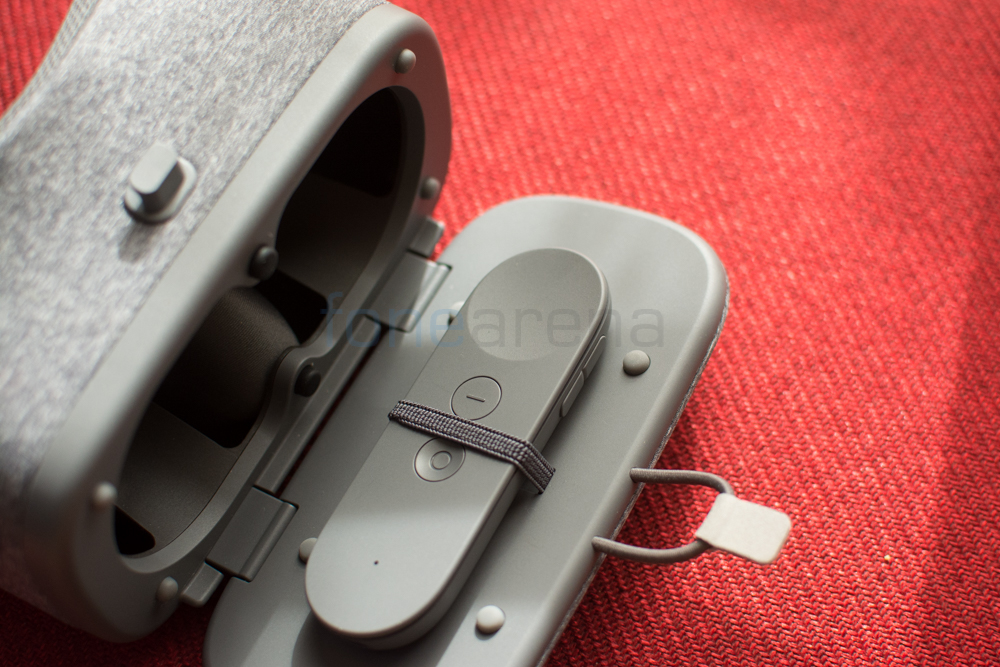
The software is smart enough to simulate switching between left and right hands. Using the gyroscope, the software is able to display an almost real-time approximation of the controller in 3D space. When you’re done, you can simply place the remote back in the headset where a strap has been provided to keep it in place.
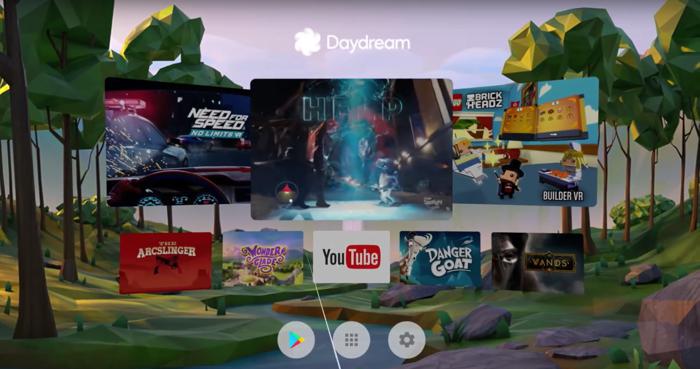
Coming to the actual experience, the Daydream View UI is a very polished affair that looks visually pleasing. Unfortunately app discoverability is a convoluted process and there’s no apparent way to locate apps other than by going through the categories populated by Google. This points to yet another issue i.e. the limited number of apps and experiences available. Once we’d sampled some of the games and curated experiences, there was little to do on the Daydream VR other than watch 360 degree YouTube videos.
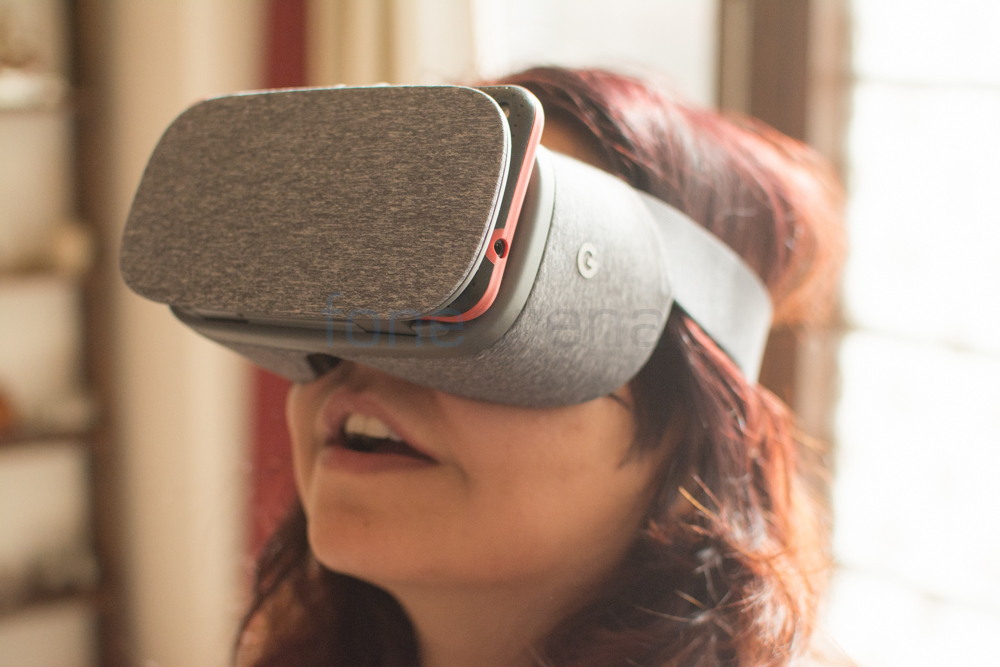
Netflix is appreciated as a supported app and the large screen experience would’ve certainly been great but the grainy and pixelated video quality meant that we didn’t quite enjoy watching shows. A minor quibble with the software would be that while it is possible to centre the interface in front you, if you are like me and want to enjoy VR content while lying in bed, you’re in for disappointment. With the entire interface shifted down by a 90 degree angle, it is almost impossible to watch VR content on the Daydream View while lying down. The frame of view on the headset is approximately 90 degrees which is lesser than competing headsets. What this means is that you’ll see tiny black bars on either side of the display area. This effect is a lot more pronounced on the regular sized Google Pixel and is not very conducive to an immersive experience.
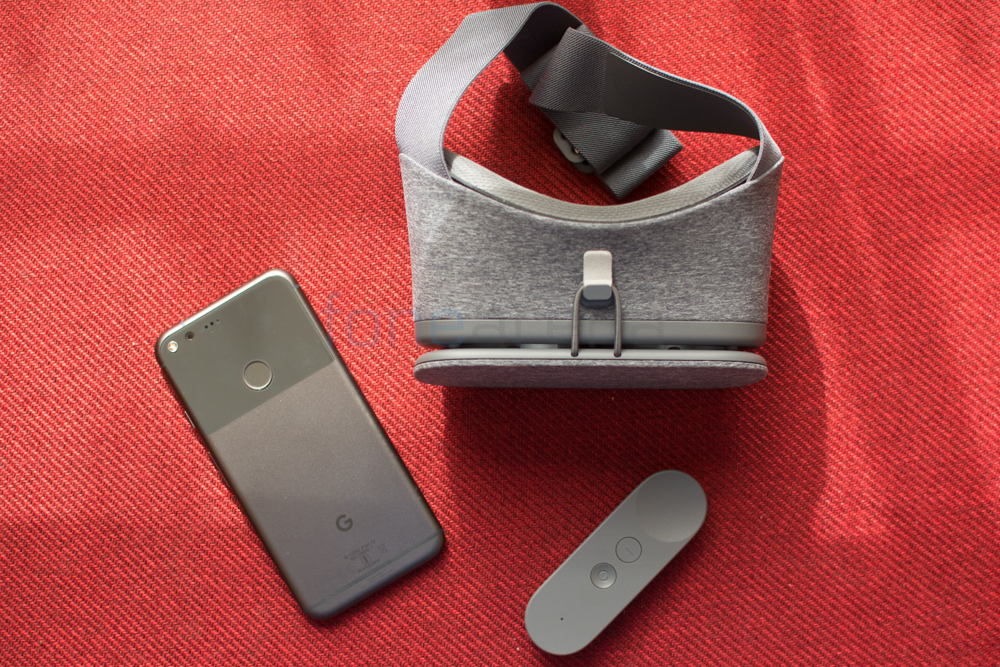
And that brings us to compatibility. Google’s Daydream View needs an equally certified smartphone to function. So far that includes the Pixel, Pixel XL and Moto Z. We expect this list to grow over the coming months but for now, you are quite limited by the hardware selection. The phone once slotted into the front of the headset immediately switches over to the Daydream app through the magic of NFC. Notifications can still be viewed when in the VR mode but the interface requires you to take the phone out in case you need to grant permissions which can be quite jarring. There’s also the fact that using your phone in VR mode for any duration will make it heat up massively. While our Pixel XL could comfortable last almost 4 hours in VR mode, we wouldn’t regularly push it that hard. The phone managed to get hotter than most would consider comfortable.
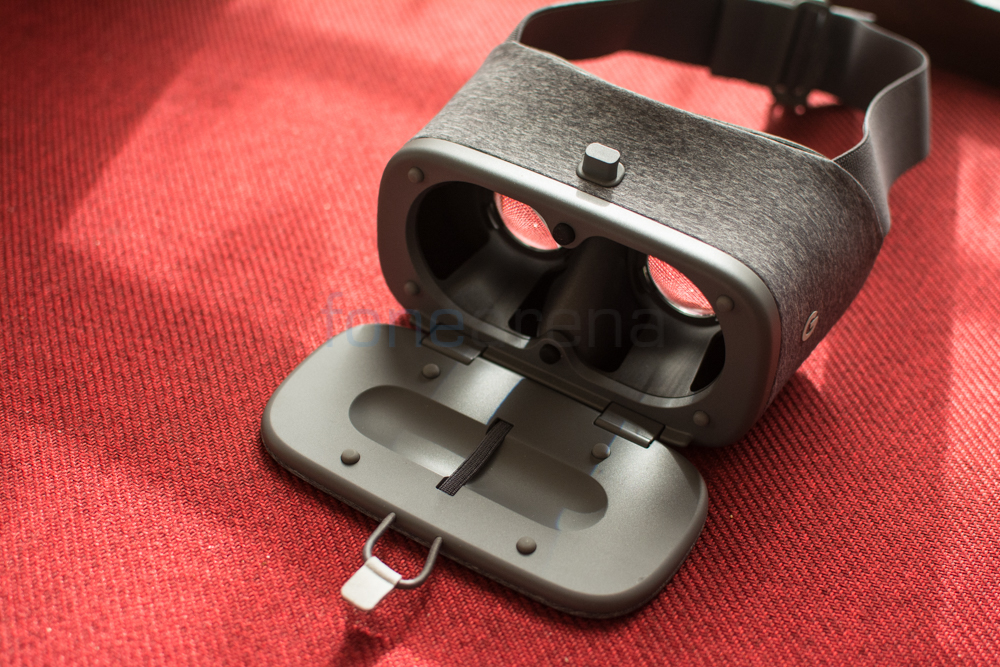 All in all though, the Daydream View is a fantastic gateway to the world of VR. It certainly isn’t the first to market not does it offer the best experience, what it does bring to the table however is approachability. The dead simple mechanism, intuitive remote and soft, friendly fabric construction all go a long way in making it usable for an average consumer. And that’s really it, if Google manages to expand phone compatibility and increase the app database, no small feats, the Daydream platform has the basics in place to make it the VR platform for the masses. The Google Daydream View is priced at Rs. 6,499 and is available on Flipkart.
All in all though, the Daydream View is a fantastic gateway to the world of VR. It certainly isn’t the first to market not does it offer the best experience, what it does bring to the table however is approachability. The dead simple mechanism, intuitive remote and soft, friendly fabric construction all go a long way in making it usable for an average consumer. And that’s really it, if Google manages to expand phone compatibility and increase the app database, no small feats, the Daydream platform has the basics in place to make it the VR platform for the masses. The Google Daydream View is priced at Rs. 6,499 and is available on Flipkart.
